This post may contain affiliate links. Please read our disclosure policy.
This pineapple skin tea combines the power of pineapple peel, turmeric, ginger, honey, and more for a sweet, flavorful anti-inflammatory tea!
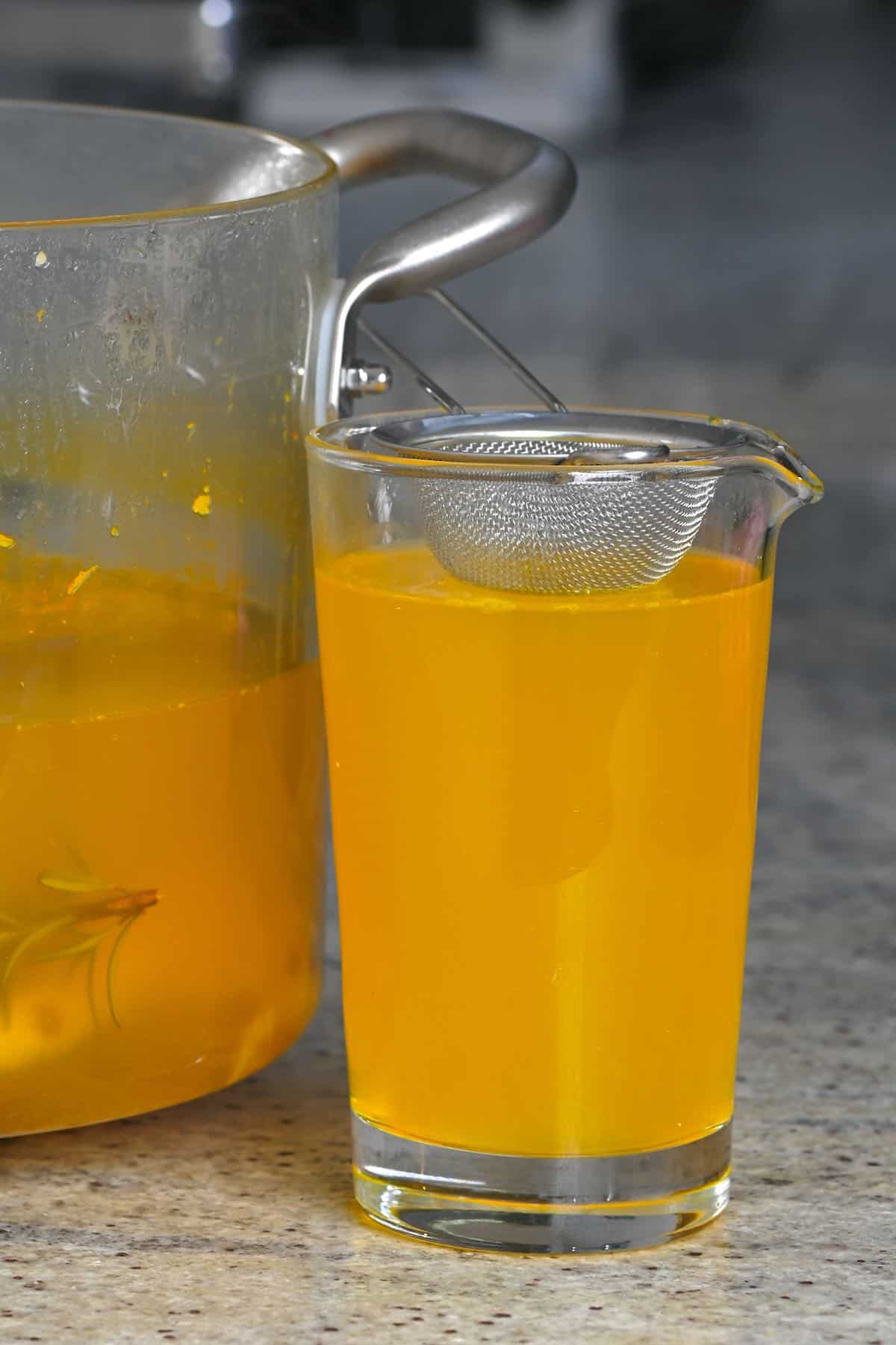
After years as a food blogger, I’m always on the hunt for ways to reduce my food waste. This pineapple skin tea is something I stumbled upon recently, and I’m so sorry that it’s taken me this long to discover – all that pineapple peel I could have transformed into delicious, flavorful anti-inflammatory tea (aka pineapple tea)!
This pineapple skin tea is inspired by a popular traditional Jamaican similar drink combining pineapple peel with ginger, orange/lemon juice, and several other additions. Luckily, it’s now in my life, I added a couple of extra ingredients, and I think you very well may love it as much as I do.
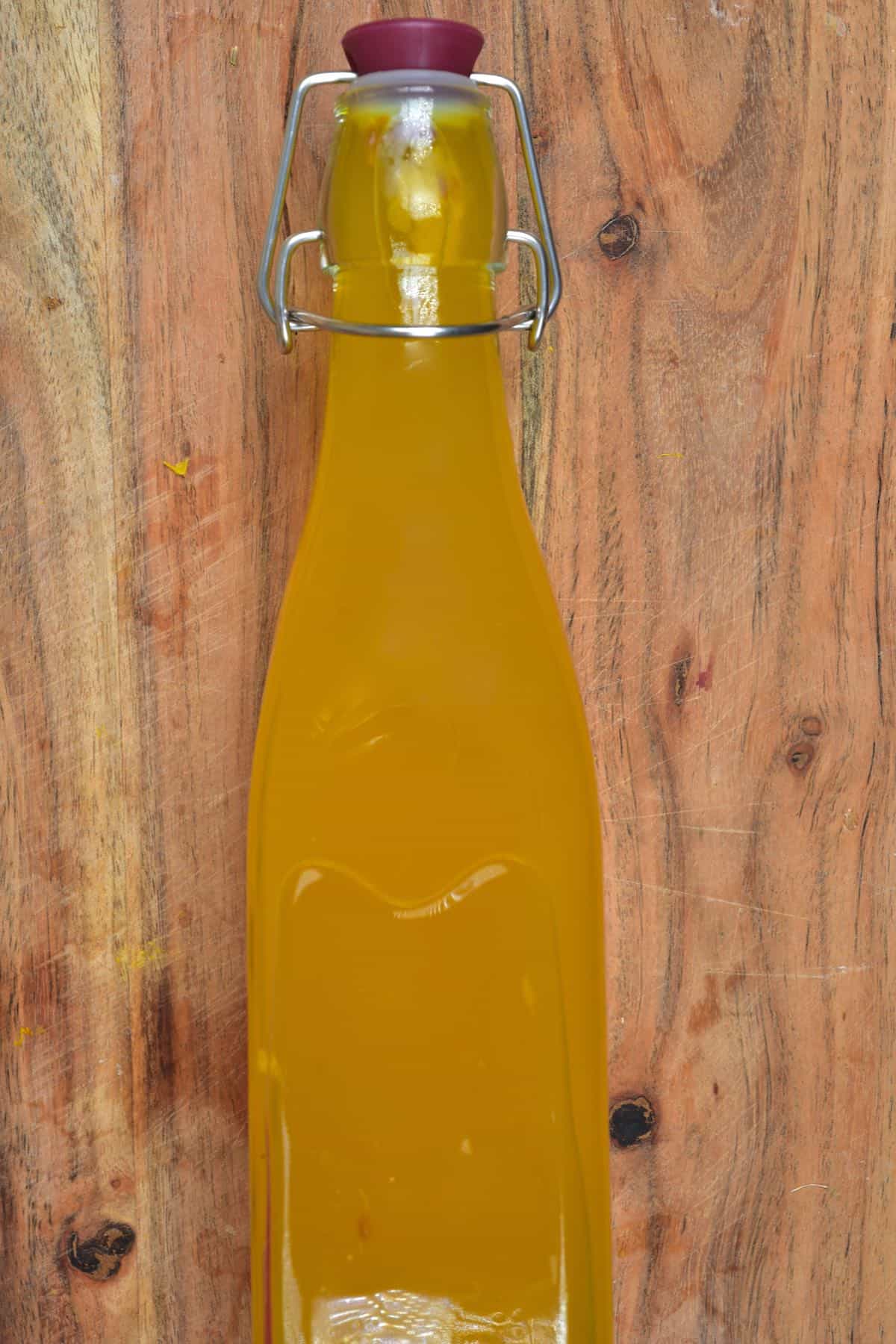
I’m no stranger to combining turmeric and ginger for their excellent health and anti-inflammatory benefits (like these Ginger Turmeric Energy Shots, One-Pot Turmeric, Ginger &Pumpkin Soup, and Simple Golden Spice (Golden Milk Powder). However, the addition of pineapple peel adds extra flavor and anti-inflammatory benefits to the tea!
Want to save this recipe?
Pineapple Skin Benefits
Pineapple contains (including the pineapple peel and core) a powerful enzyme called bromelain. Bromelain is a protein-digesting enzyme with anti-inflammatory benefits and has been used medicinally for centuries.
Currently, bromelain is used for several purposes – when ingested, it is likely to reduce inflammation and swelling of the nasal passages and throat. However, it also helps prevent blood clotting and encourages the formation of new red blood cells, which may be beneficial for treating cardiovascular diseases.
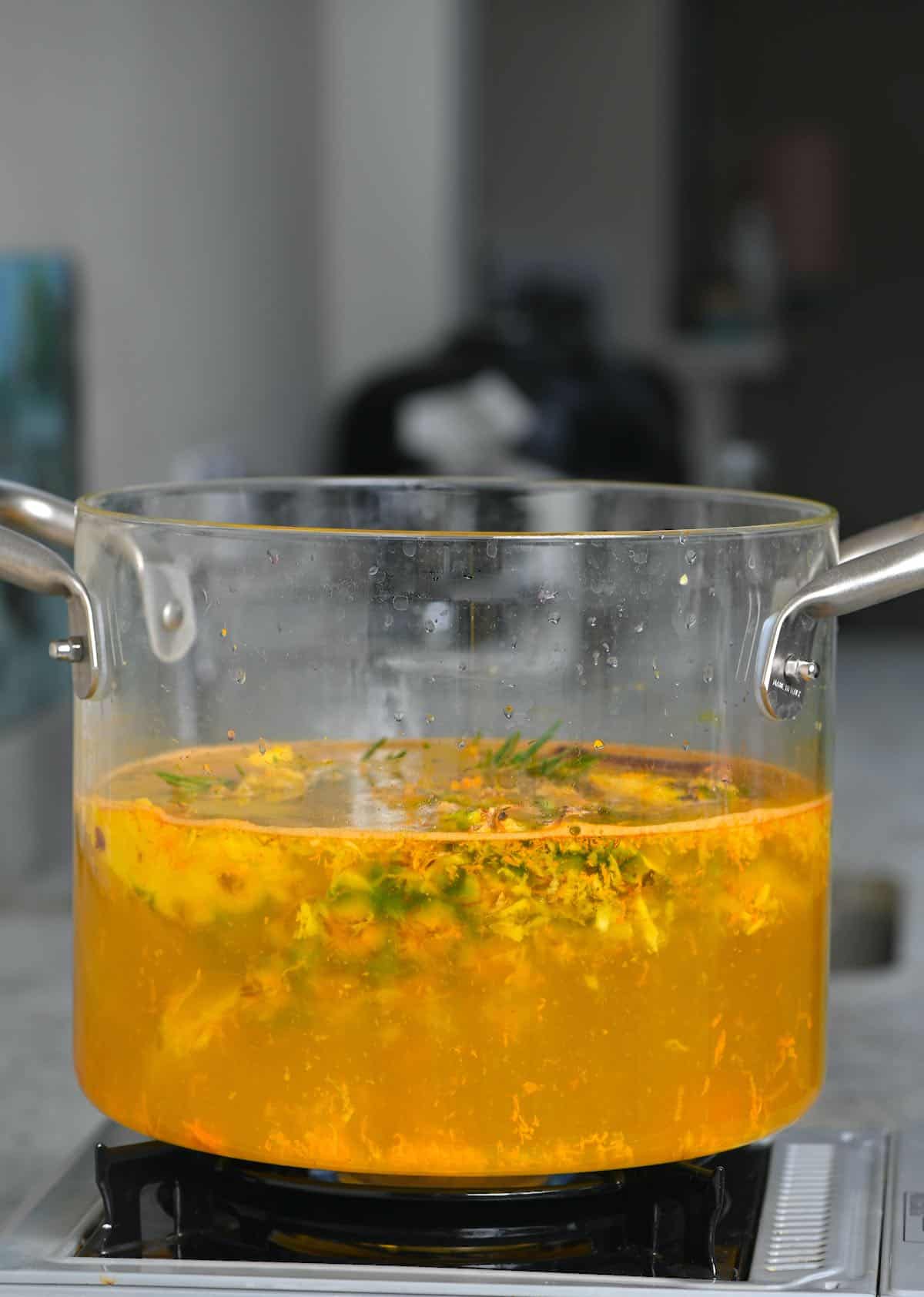
There have also been several studies to show that bromelain has the potential to help with several inflammation-related diseases. These include osteoarthritis, asthma, chronic sinusitis, colitis, and even cancer.
It is also rich in immune-boosting vitamin C and may also help with digestion issues and fighting intestinal parasites.
Top Tip: It’s important to note that bromelain can interact with several medications, including anticoagulants and antibiotics. If you’re unsure, then it’s always best to consult a medical doctor before trying this pineapple tea.
Top Tips For Pineapple Peel Tea
- Make sure to thoroughly wash the pineapple before using the pineapple peel (method included below).
- You can collect pineapple scraps in a bag in the freezer until you’re ready to make a batch of this pineapple tea.
- Add a pinch of black pepper to each serving of tea (you won’t taste it). This is needed to help our bodies fully absorb the turmeric nutrients.
The Ingredients
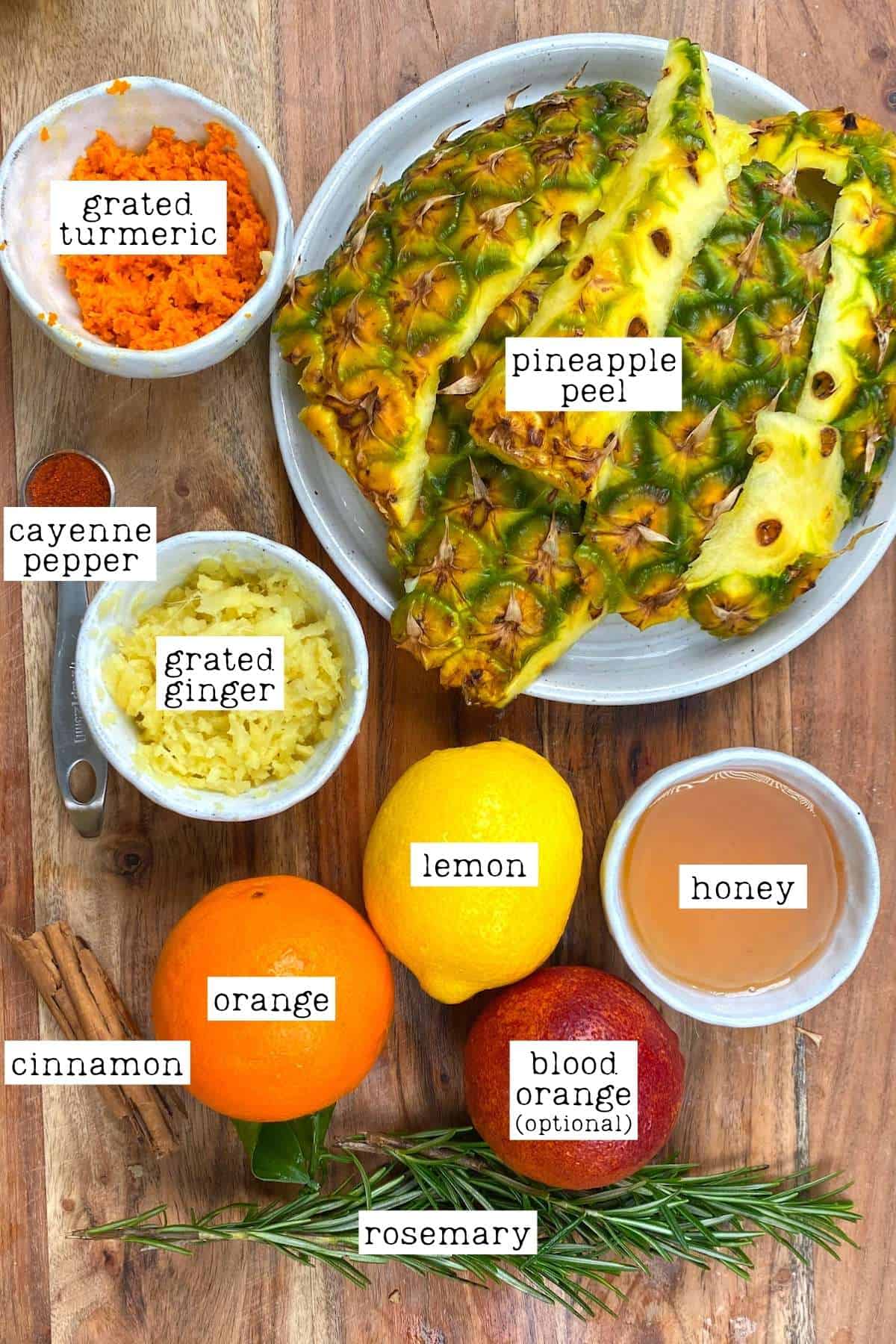
- Pineapple peel: use the core too for even more bromelain
- Orange & lemon: make sure to use fresh orange and lemon juice. I used a blood orange since I had one in my house. Feel free to use regular orange instead. You can optionally add that peel to the tea too, but I usually use it for this Non-Toxic Natural All-Purpose Citrus Cleaner.
- Aromatics: ginger and turmeric. I prefer to use fresh rather than powdered for this pineapple tea, so you don’t have the ground spice’s sediment in the liquid.
- Herbs & spices: cinnamon sticks, cayenne pepper (optional) or black pepper (to help our bodies absorb the curcumin in turmeric), and rosemary. You can experiment with other herbs that pair well with pineapple, too – mint, lemon basil, basil, sage, etc.
- Sweetener: I used honey. For a vegan option, you could use maple syrup.
Chef’s note: All of these ingredients were carefully chosen for their flavor as well as their health benefits. For example, cinnamon has anti-bacterial, anti-inflammatory, and anti-viral properties while boosting gut health, digestive health, and lowering blood pressure and sugar levels. Meanwhile, cayenne pepper is metabolism-boosting, can lower blood pressure, aids digestive health, has anti-cancer properties, and may even relieve pain. So, all of the ingredients boost the pineapple tea benefits!
How To Make Pineapple Skin Tea
Step 1: Clean the pineapple
It’s essential to clean the pineapple skin thoroughly. You can do this by scrubbing the pineapple thoroughly with a vegetable brush. I like to do a vinegar soak – which helps to remove bacteria and pesticides from the skin.
Fill a large pot with enough water to submerge the pineapple body and add 1-2 Tbsp of vinegar – this shouldn’t affect the pineapple’s flavor.
Allow it to soak for between 20-30 minutes, then rinse well with clean water.

Step 2: Remove the peel
Pat the rinsed pineapple dry and then remove the peel with a sharp paring knife. You can also use the pineapple core (I didn’t this time as I was using whole slices for a recipe, for presentation).
The pineapple flesh can be eaten as a snack or stored in the fridge/freezer to make smoothies.
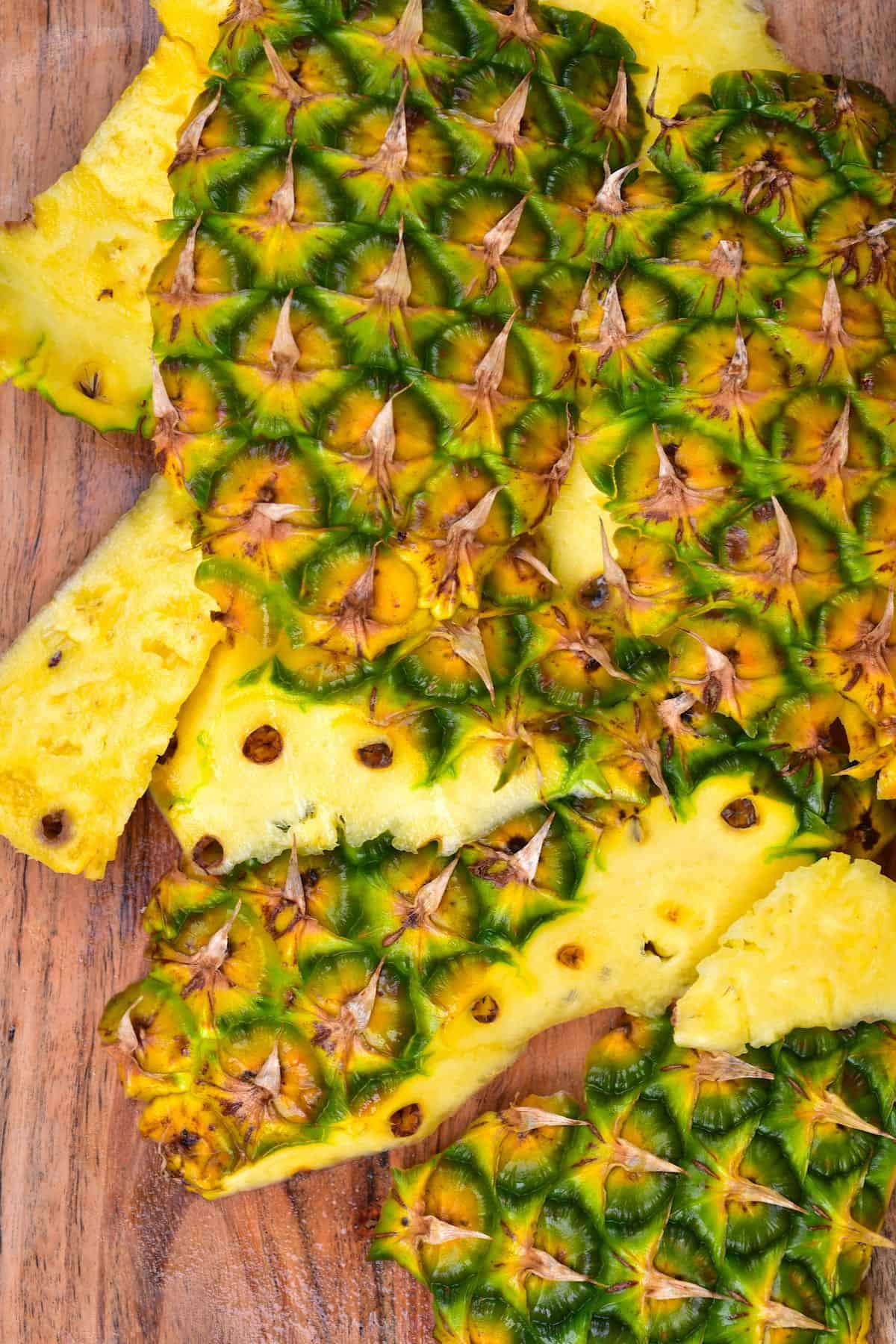
Step 3: Prepare the remaining ingredients
Prepare the ginger and turmeric roots by washing and peeling them and then grating them using a garlic grating dish or a fine grater.
You can slice them and slightly ‘bruise’ them by bashing with the knife handle’s hilt, but I find that the flavors infuse much better when grated.
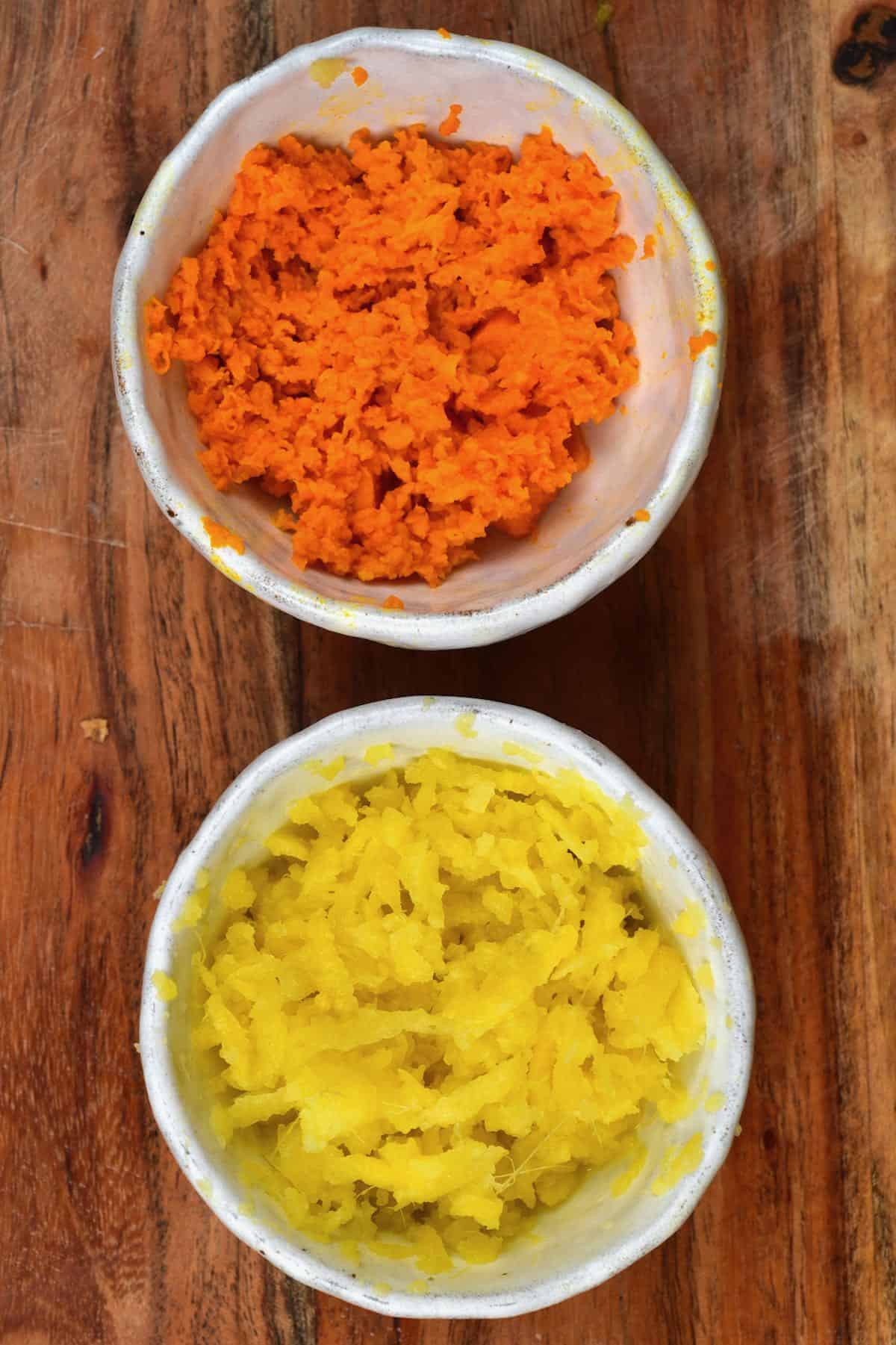
Do this step with gloves on as the turmeric WILL stain your skin.
Then, juice the lemon and oranges – you can do this with an electric or manual juicer.
Step 4: Brew the pineapple tea
Add all of the ingredients (except the honey) into a large pot with water and heat over medium heat. Bring to a boil and then allow to simmer for an hour – the longer it simmers, the more flavorful it will become.
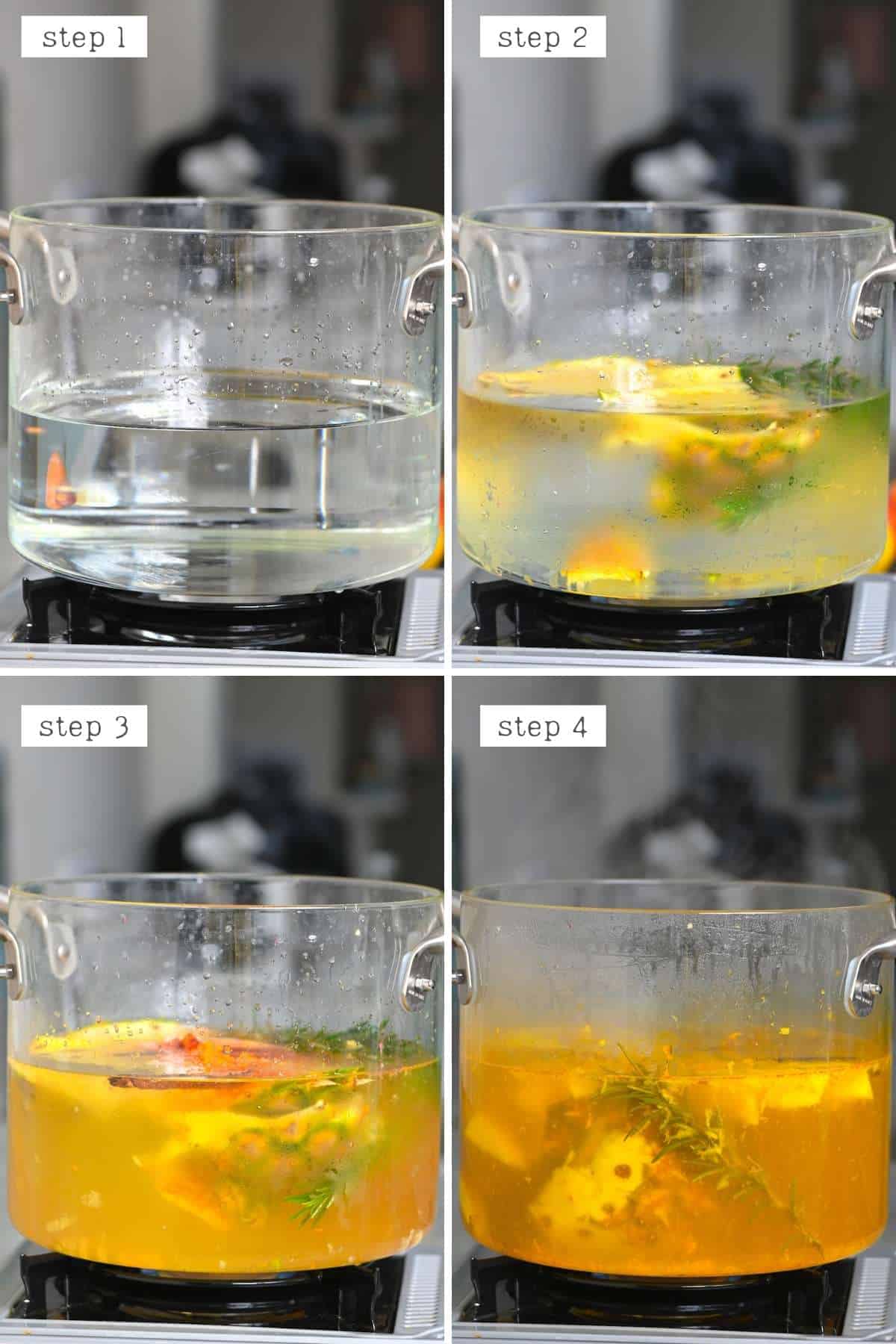
Step 5: Sieve and decant the pineapple skin tea
Allow the tea to cool down slightly before you sieve it and transfer it to bottles.

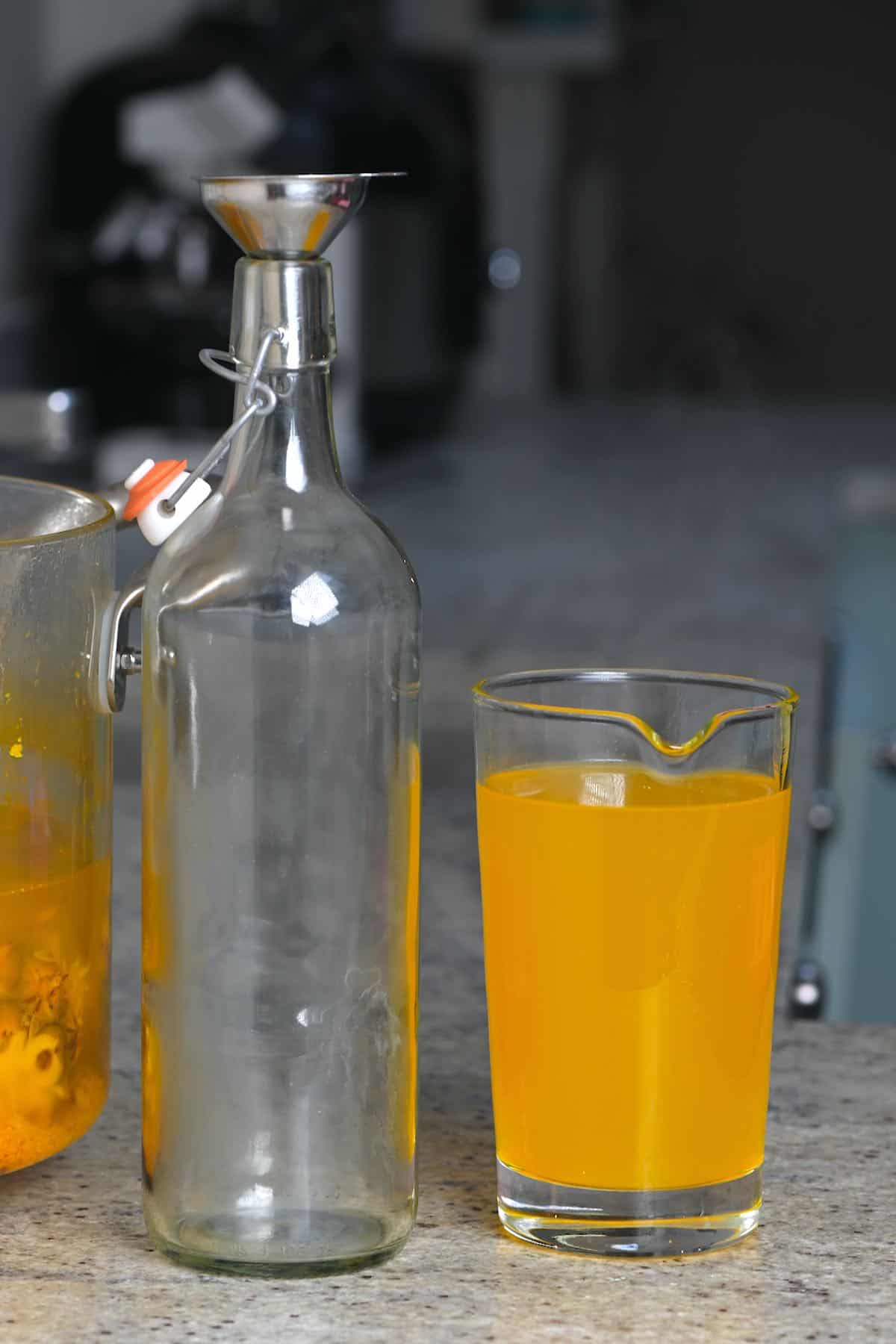
Optionally, forego the sieve and remove the large pieces of pineapple skin and the rosemary. However, you will then have some remaining pulp in the drink.
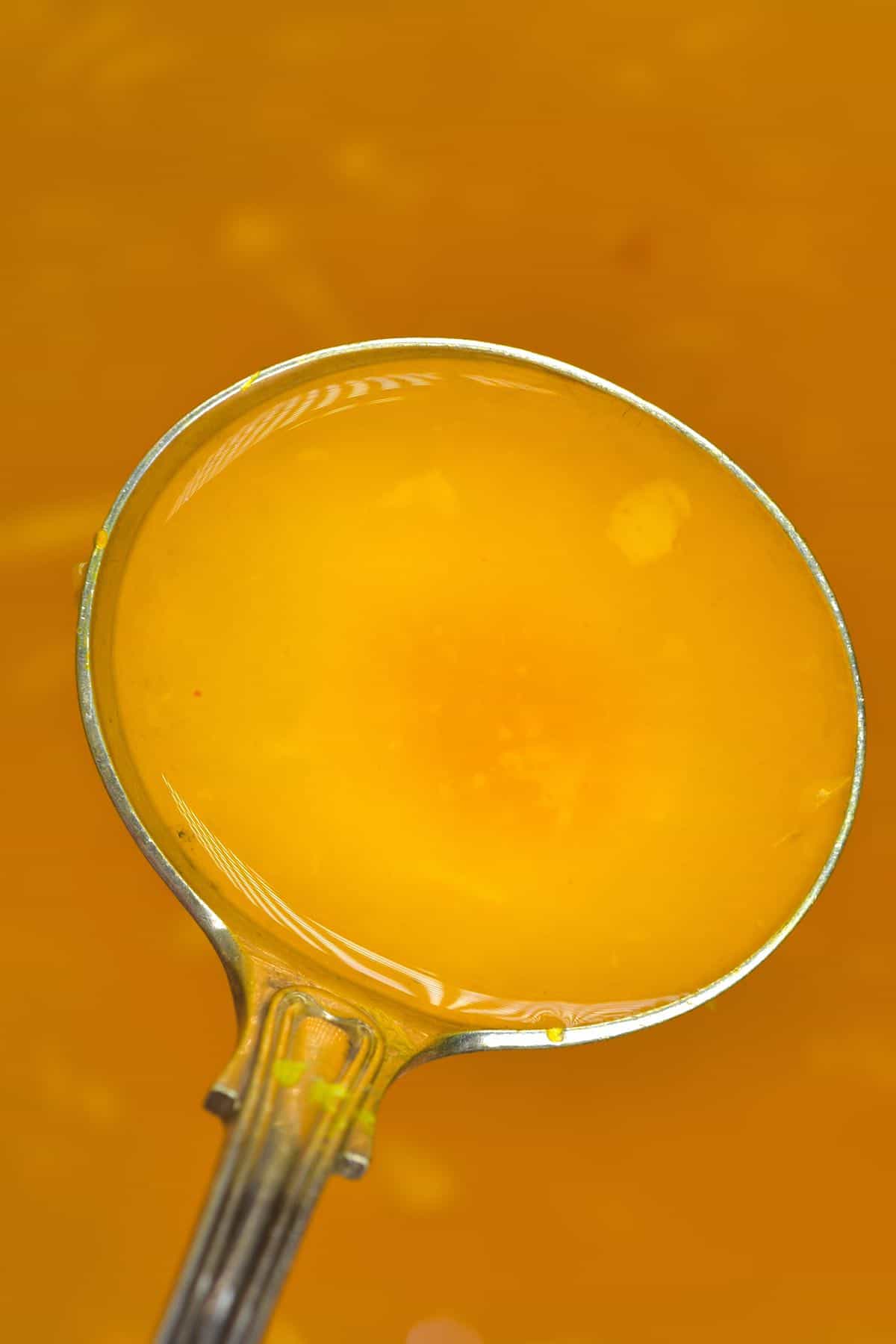
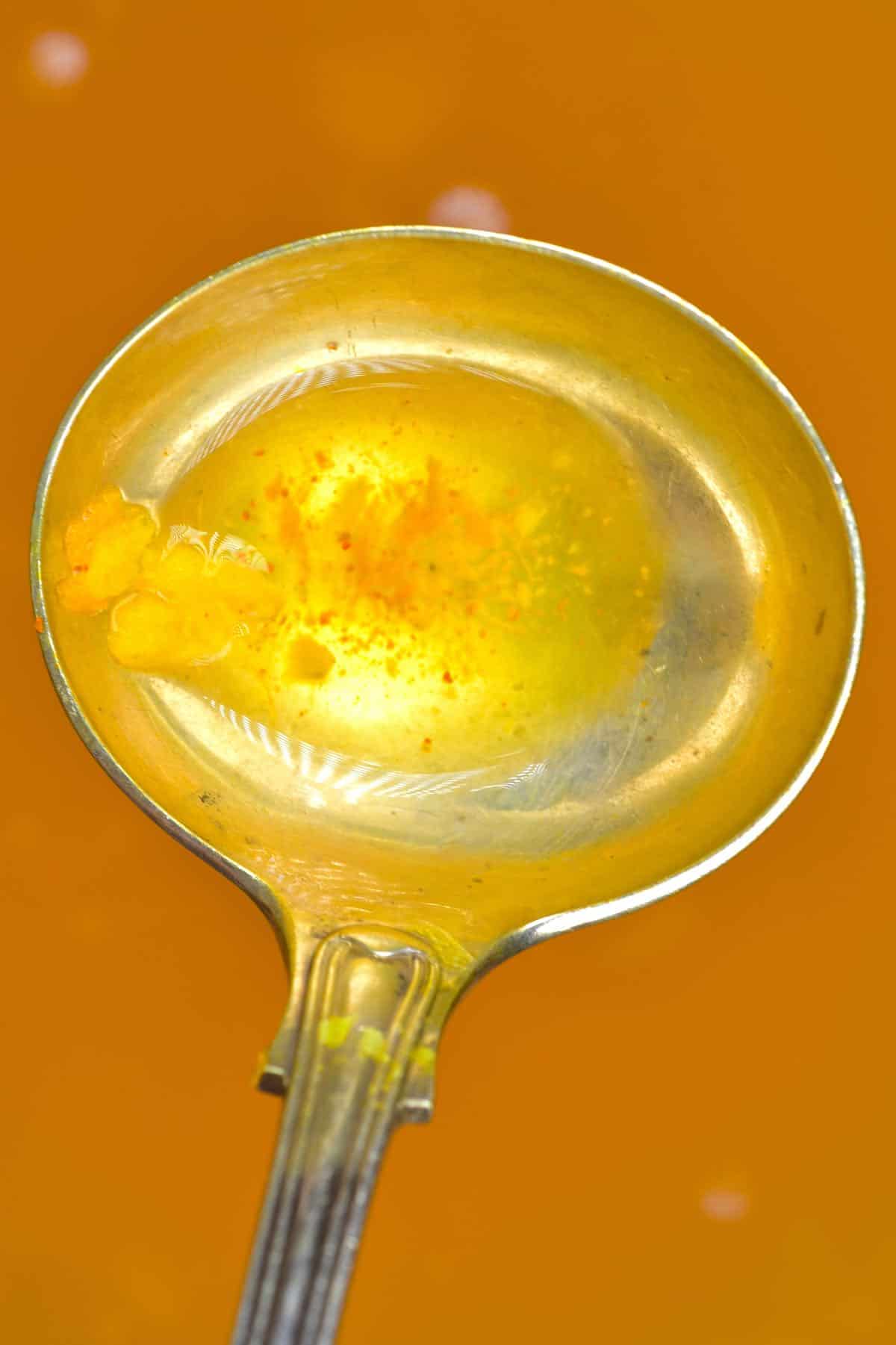
You can add a little sweetener now (I used honey), or just before serving it, or omit this entirely.
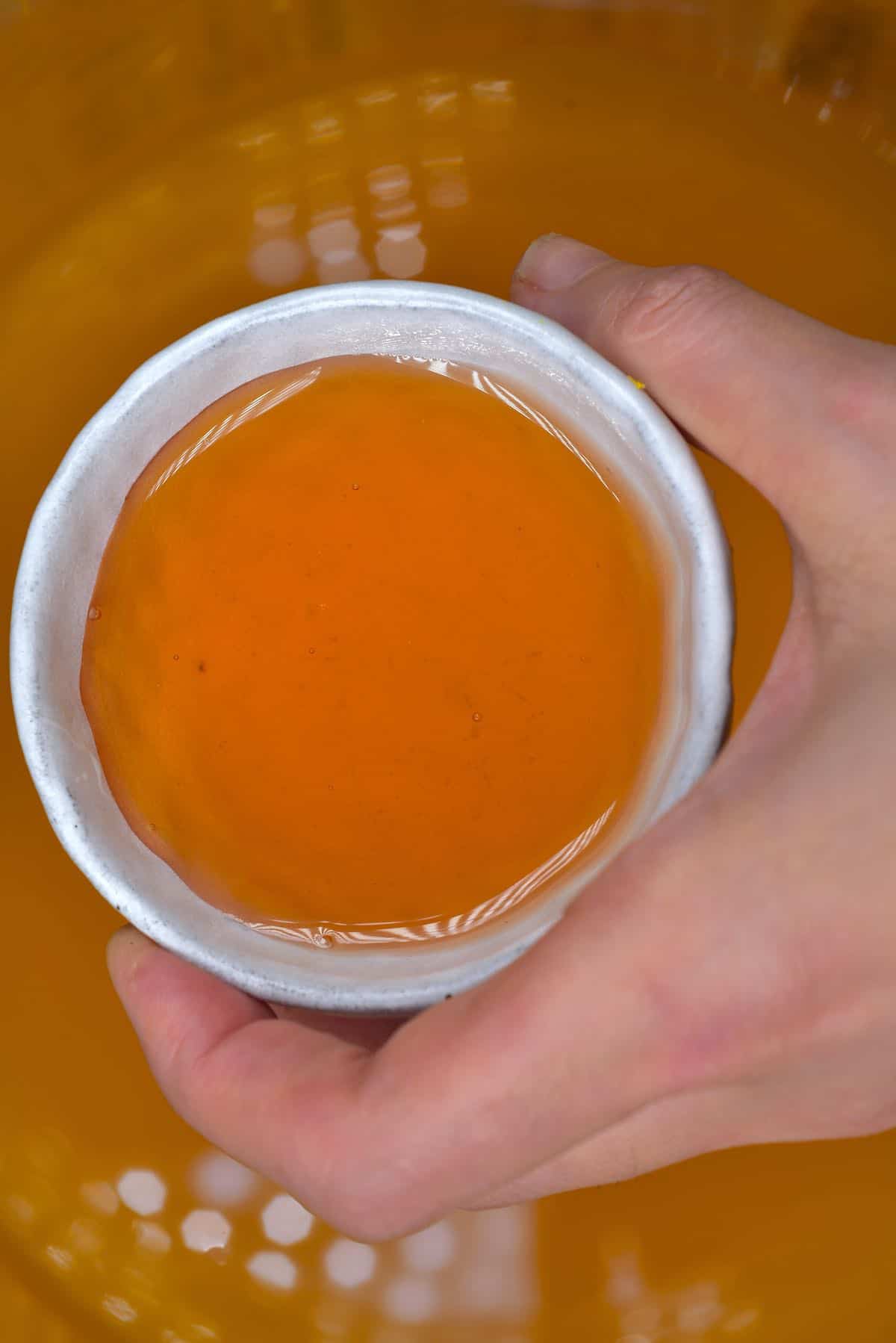
The pineapple tea is then ready to drink immediately or store for later.
How To Serve
You can enjoy the anti-inflammatory warm or cold. It can be enjoyed alone or added to other drinks, including lemonade and cocktails in place of pineapple juice.
How To Store
Fridge: Store the leftover pineapple skin tea in airtight glass containers (so they don’t stain) in the refrigerator for up to 10 days.
Freeze: The pineapple tea can also be frozen into ice-cubes to add to drinks or thaw and consume.
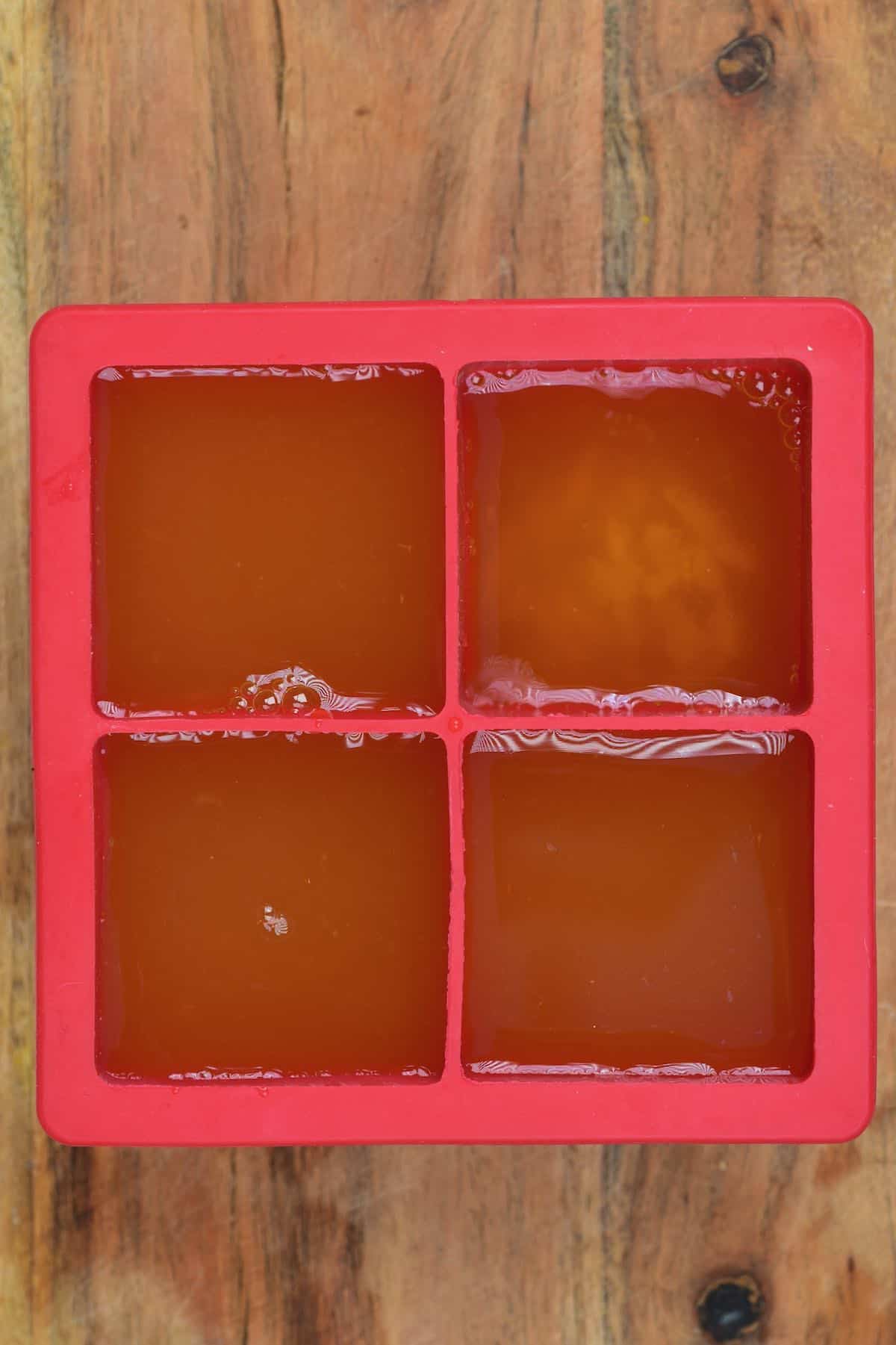
How to use the leftover pulp?
After removing the rosemary and cinnamon sticks from the anti-inflammatory tea, there’s no need to discard the leftover pulp. This can still be used in several ways:
To create a pineapple juice: While lots of the flavor will be in the brewed tea, you can add all of the leftover pulp to a blender with some water and then sieve for a juice. As you haven’t ‘squeezed’ the peel before, there should still be plenty of flavor left to work with.
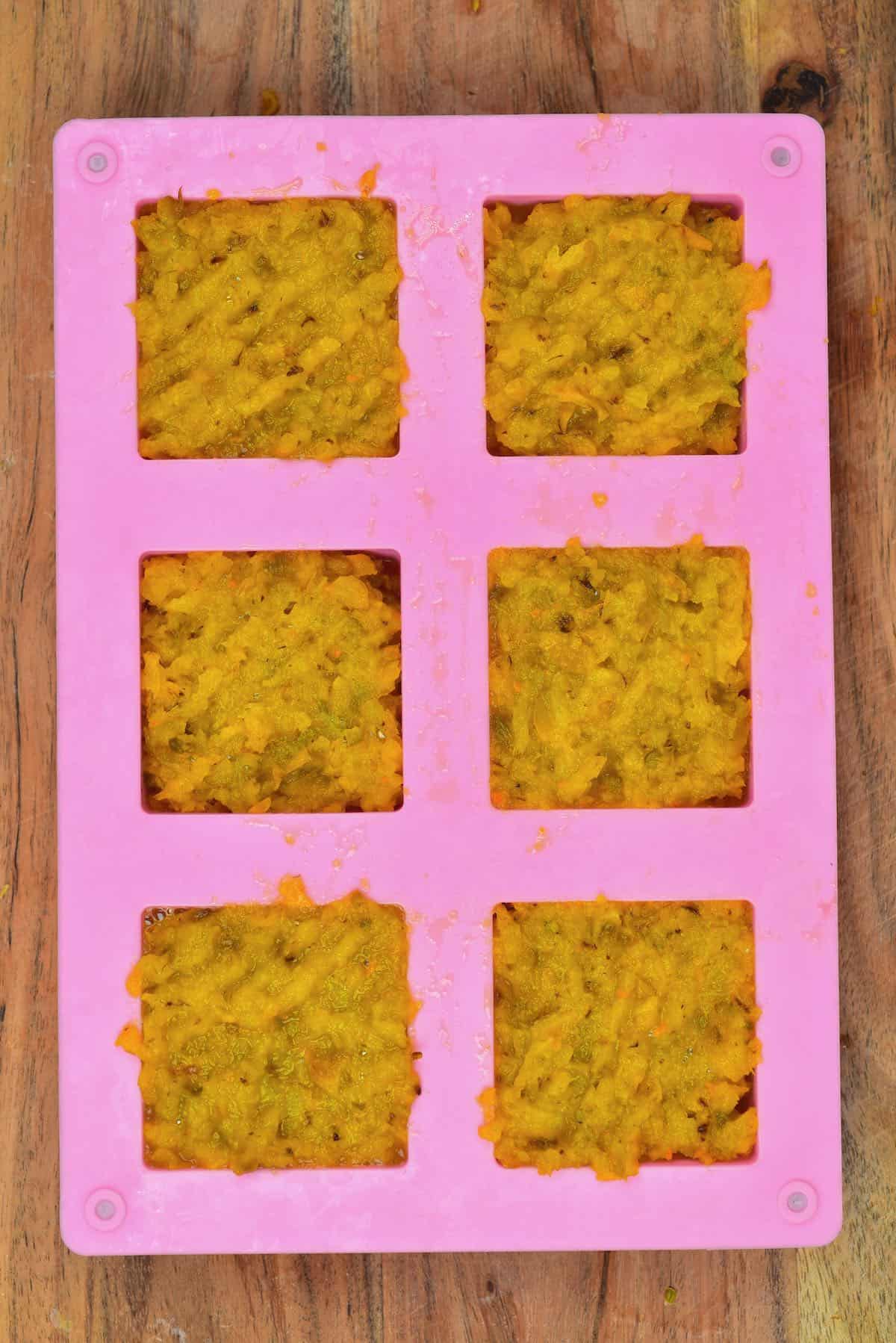
Blended into pulp: Blend the pineapple peel and leftover ginger and turmeric sediment into a pulpy mush. This can be frozen into ice cubes and then used in several ways.
- To add to smoothies.
- Add to marinades and stocks.
- To make a single portion of hot tea.
Related Recipes
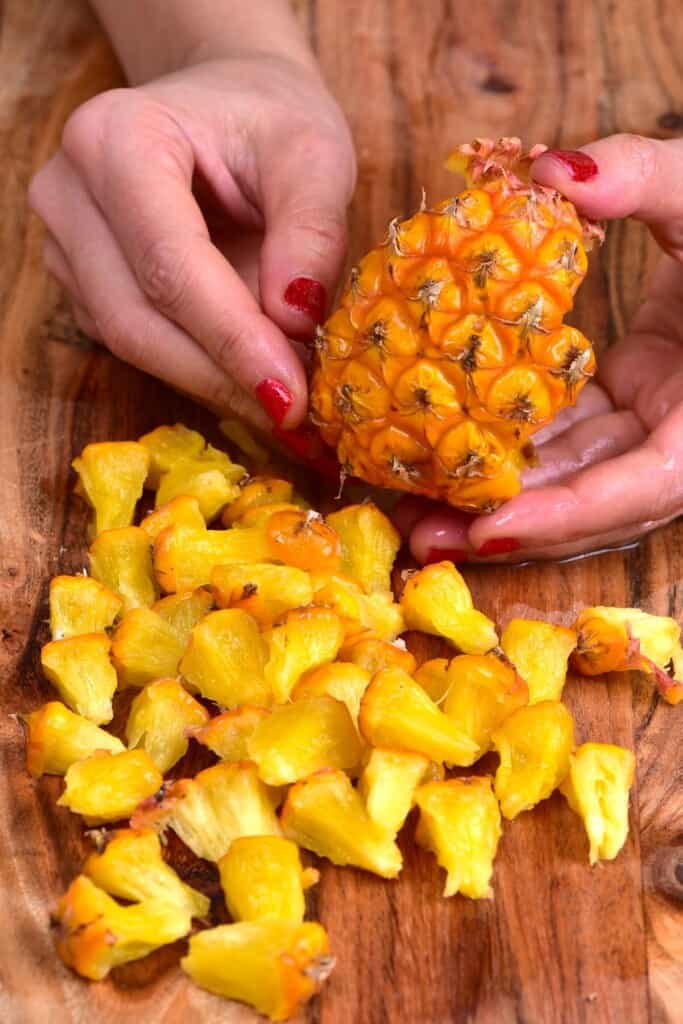
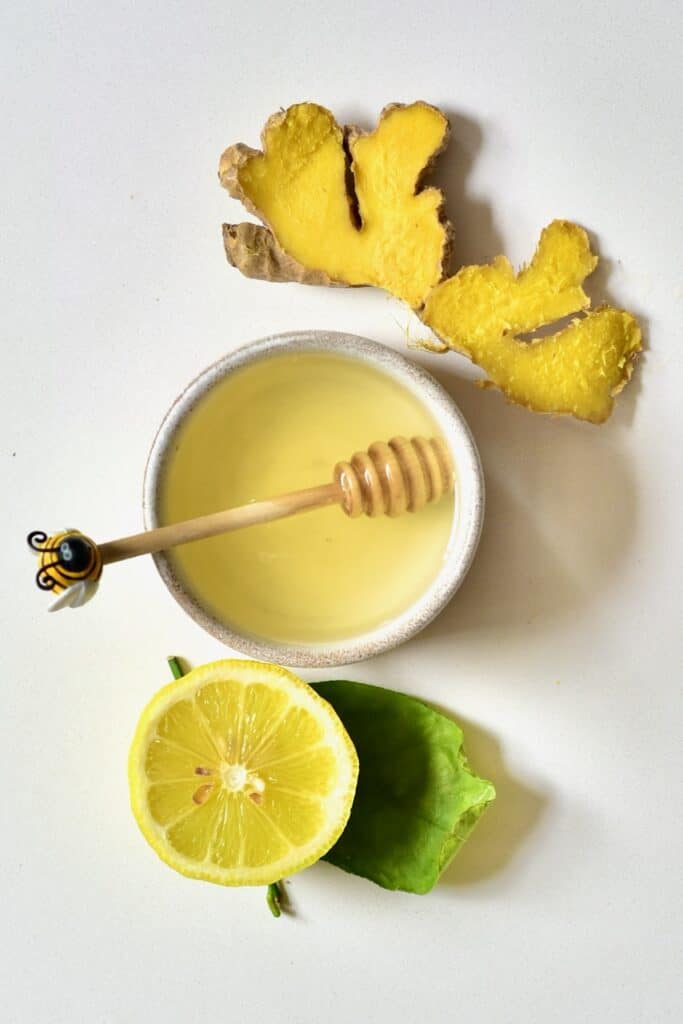
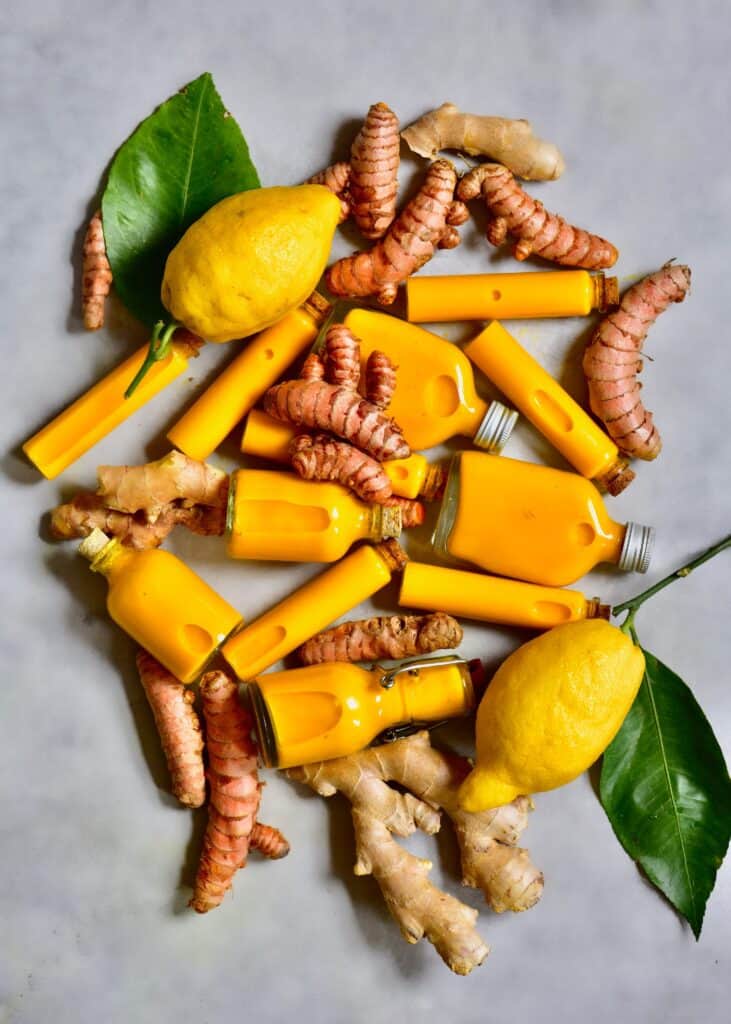
If you try this Pineapple Skin Tea recipe, then let me know your thoughts and questions in the comments. I’d also really appreciate a recipe rating and would love to see your recreations – just tag @AlphaFoodie.
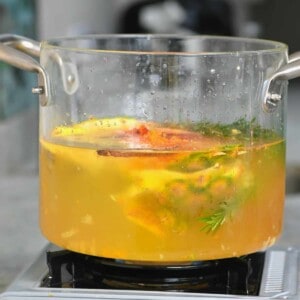
Pineapple Peel Tea
Ingredients
- 17 cups water
- 1 pineapple large, the peel and core
- 2 oranges any variety
- 1 lemon
- 2 Tbsp turmeric grated
- 3 Tbsp ginger grated
- 1/2 tsp Cayenne pepper or fresh black pepper (for absorbing turmeric nutrients)
- 2 sprigs rosemary or thyme, basil, lemon thyme, etc.
- 2 cinnamon sticks
- 3 Tbsp honey optional, can be added in teaspoons when serving the tea. OR maple syrup for vegan.
Instructions
Step 1: Clean the pineapple
- It's essential to clean the pineapple skin thoroughly. You can do this by scrubbing the pineapple thoroughly with a vegetable brush. I like to do a vinegar soak – which helps to remove bacteria and pesticides from the skin.Fill a large pot with enough water to submerge the pineapple body and add 1-2 tbsp of vinegar – this shouldn't affect the pineapple's flavor.Allow it to soak for between 20-30 minutes, then rinse well with clean water.
Step 2: Remove the peel
- Pat the rinsed pineapple dry and then remove the peel with a sharp paring knife. You can also use the pineapple core.The pineapple flesh can be eaten as a snack or stored in the fridge/freezer to make smoothies.
Step 3: Prepare the remaining ingredients
- Prepare the ginger and turmeric roots by washing and peeling them and then grating them using a garlic grating dish or a fine grater. Do this step with gloves on as the turmeric WILL stain your skin.You can alternatively slice them and slightly 'bruise' the pieces by bashing with the knife handle's hilt, but I find that the flavors infuse much better when grated.
- Juice the lemon and oranges.
Step 4: Brew the pineapple tea
- Add all of the ingredients (except the honey) into a large pot with water and heat over medium heat. Bring to a boil and then allow to simmer for an hour – the longer it simmers, the more flavorful it will become.
Step 5: Sieve and decant the pineapple skin tea
- Allow the tea to cool down slightly before you sieve it and transfer it to bottles.Optionally, forego the sieve and remove the large pieces of pineapple skin and the rosemary. However, you will then have some remaining pulp in the drink.
- You can add a little sweetener now (I used honey), or just before serving it, or omit this entirely.The pineapple tea is then ready to drink immediately or store for later.
How To Serve
- You can enjoy the pineapple tea warm or cold. It can be enjoyed alone or added to other drinks, including lemonade and cocktails in place of pineapple juice.
How To Store
- Fridge: Store the leftover pineapple skin tea in airtight glass containers (so they don't stain) in the refrigerator for up to 10 days.Freeze: The pineapple tea can also be frozen into ice-cubes to add to drinks or thaw and consume for between 1-2 months.
Video
Notes
- Make sure to thoroughly wash the pineapple before using the pineapple peel (method included below).
- You can collect pineapple scraps in a bag in the freezer until you’re ready to make a batch of this pineapple tea.
- Add a pinch of black pepper to each serving of tea (you won’t taste it). This is needed to help our bodies fully absorb the turmeric nutrients.
- There’s no need to throw out the boiled pineapple skins – read the FAQ just above this recipe card on ways to use the leftover boiled ingredients.
Nutrition
Nutrition information is automatically calculated, so should only be used as an approximation.





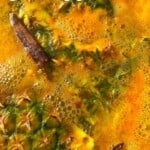















Hi there 🙂 I am so so glad did you put the black pepper and there and why. A lot of people do not do that. I love this tea and I actually add dried hibiscus leaves when I’m cooking it and cloves and fresh rosemary and sometimes some other odds and ends I have around. Thank you for your Recipes. Blessings
Thank you so much for your comment, Susan 🙂 Adding dried hibiscus sounds delicious!
Tastes great with honey. I just starting drinking it so not sure about the benefits yet. BTW, there was no FAQ section above the recipe card. What can be done with the boiled peels?
Hi Viveo,
You can blend the pulp and then add it to smoothies, marinades and stocks. There are more tips in the section “how to use the leftover pulp” here on the post. I hope this helps.
This looks fantastic and I’m so happy to learn about the healthy benefits of pineapple skins! I have a question: have you ever tried to ferment this beverage? I’m thinking it might taste really great with a little FIZZ. Thanks! I’m glad I discovered your blog!
Hi Amy,
I haven’t tried fermenting this tea but I have made Tepache De Piña (pineapple) – maybe you want to give it a try: https://www.alphafoodie.com/tepache-de-pina/
So I tweaked this a little bit replacing rosemary with 5-8 cloves and adding one large apple cored and sliced. I sweeten with 1.5tsp of monkfruit to cut back on sugar. I drink 6-8oz over ice every morning or extra whenever I’m feeling a little achy. My results have been astonishing. For a good healthy boost put in 16oz shaker bottle packed with ice, 6-8oz of tea, 1-2tsp monkfruit, a dropper full of chlorophyll, acacia and ashwaghanda and drink on an empty stomach! 10:10 recommended
Thank you for the recommendation, Karrie. I will have to try it out! 🙂
Thank you, for your version. I was drinking a version that did not include turmeric and the other herbs, it included ginger, and lemon, but I like this version because I need the benefits of the turmeric.
Thank you for your comment, Deneice. Glad you like this version. 🙂
This sounds delicious! Would you typically just drink one serving per day?
Hi Jess,
Thank you and yes 🙂 but I’m sure it won’t be easy to stick to one serving. 😉
Help!!! Please!!! So I made your pineapple peel tea last night and it’s probably one of the most awesome things I’ve ever done. I could not get over the incredible smell, and after it simmered an hour, I tasted it and it blew my mind. I was so happy and excited. I turned the eye off to let it cool…AND FELL ASLEEPPPPPPP. So, it’s been sitting out from 10:30 on to 5:45 am. Is the whole thing spoiled now? Is it unsafe to drink? I am SO mad at myself!!! Thank you so much for getting back to me!
Hi Amanda,
Oh no, I’m so sorry for only replying now. If your room temperature wasn’t too warm (above 21º Celsius), I’m sure it would still be fine. Did you end up throwing it away?
Make this every Sunday for the week. I love it. I use basil cloves and vanilla along with all of the other ingredients. My fiancé says it has the added bonus of making the house smell “really good”
Thank you so much for your comment, Sue! Adding basil cloves and vanilla sounds delicious.
I made this tea this evening and my husband and I loved it. We drank it warm and sweetened with honey. I did. It have fresh rosemary so I opted for fresh basil instead. It tasted great.
Thank you for your lovely feedback, Karen! Glad you like this recipe and I hope you give some of my other recipes a try 🙂
So I’ve been wanting to I try this. I finally have it started. But after wine I decided to be a witch with a cauldron and add the orange peels and then bananas with the peels because after much research I found that they are good for you too. My husband is a little worried looking at all this in the pot. I’m confident it will be good. If not I have more wine lol.
Thank you for your comment, Amanda. Please let me know how it was 🙂
I add fresh cilantro leaves near the end of the boiling period because of its health benefits and taste. There are so many interesting combinations one can use. Thanks for your recipe.
Thanks for the tip, Naomi. Glad you like this recipe 🙂